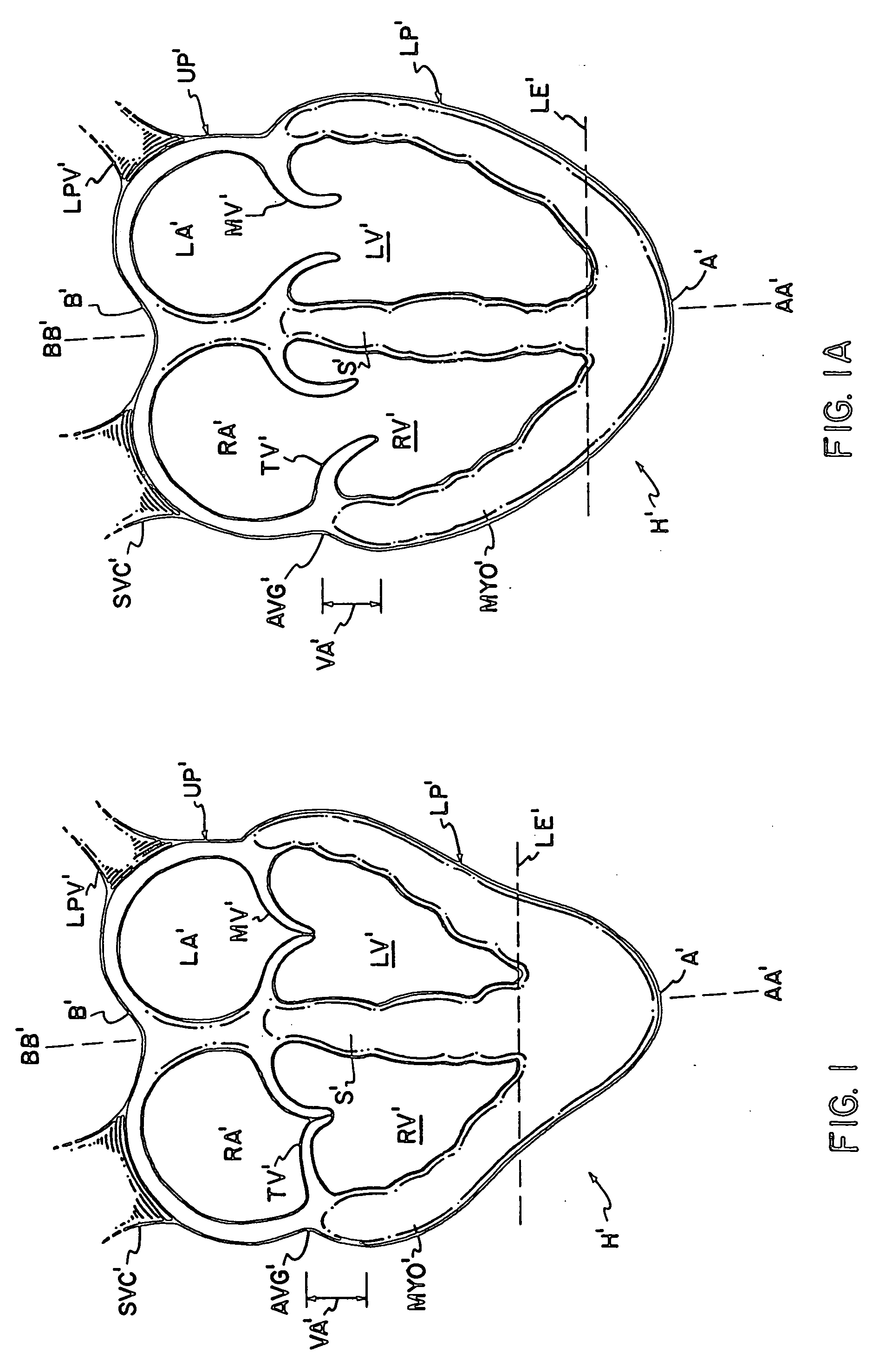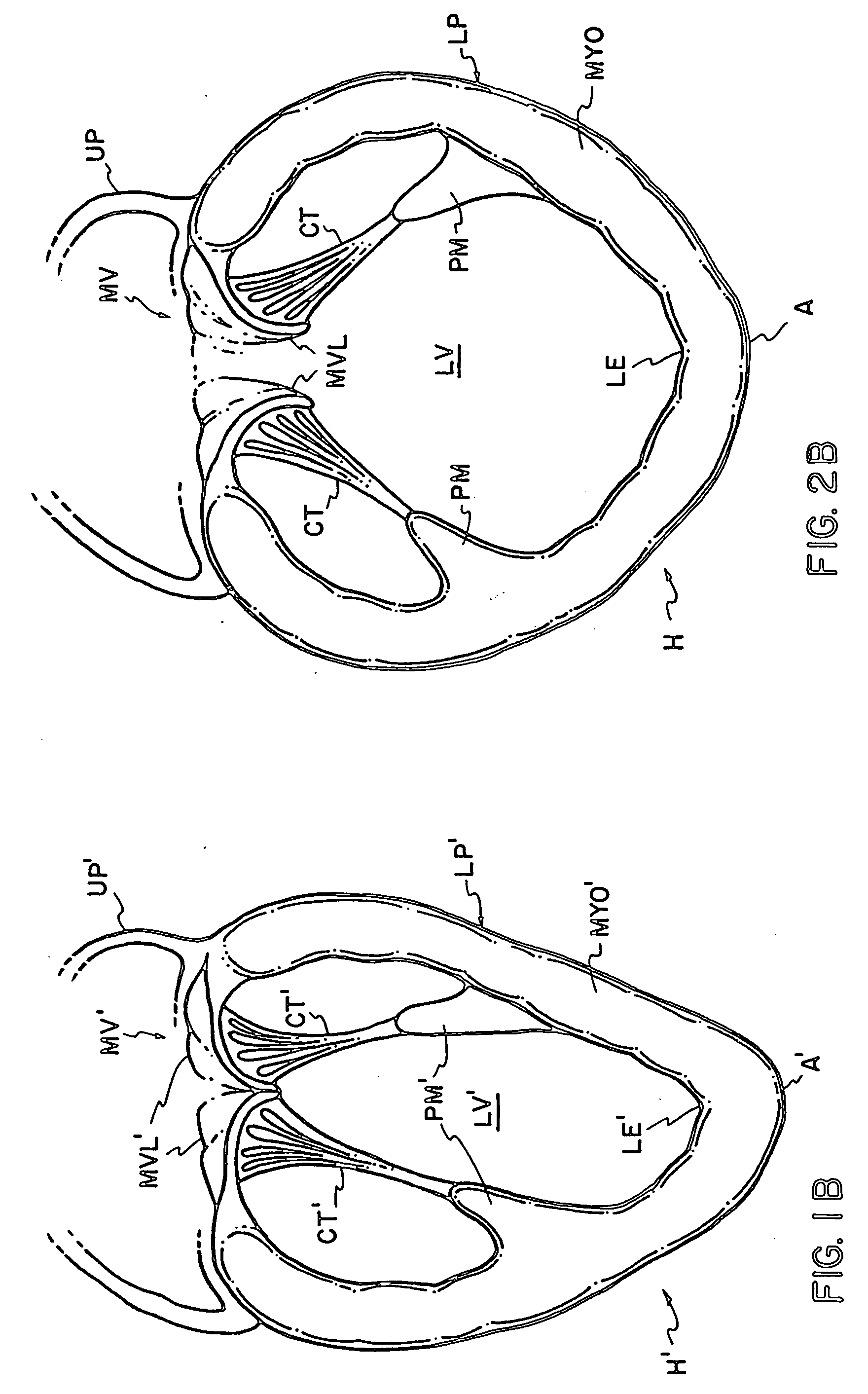Compliant cardiac support device
a cardiac support and heart valve technology, applied in the field of heart disease devices and methods, can solve the problems of fatigue of afflicted patients, inability to perform even simple exerting tasks, pain and discomfort of patients, and the heart becomes so large that the heart cannot adequately supply blood
- Summary
- Abstract
- Description
- Claims
- Application Information
AI Technical Summary
Benefits of technology
Problems solved by technology
Method used
Image
Examples
example 1
[0128] In this example, the heart is assumed to be spherical in shape and 46 cm (18 in.) in diameter at end diastole. The device is installed around the heart and adjusted to create a uniform loading of the fabric. Because the heart is spherical in shape, the pressure is uniformly applied to the heart and resisted by the device like a spherical pressure vessel, where the load per unit width is pd / 4 (Note: p=pressure, d=diameter). Since the load is uniform the multiaxial compliance curve of the fabric would be most applicable. FIG. 21 illustrates the installed condition for an end diastolic device pressure of 20 mm Hg (2.7 kPa). This corresponds to 0.6 lbs / in. fabric load for this size heart.
[0129] During systole the heart muscle contracts and the external dimension is reduced. On average, the heart reduces circumferentially by approximately 6% and longitudinally by 4% from end diastole to end systole. Thus, for the case of a 4% to 5% change in circumference and diameter is assumed....
example 2
[0132] In this example, the heart is assumed to be cylindrical in shape and again 46 cm (18 in.) in circumference at end diastole. The device is installed around the heart and adjusted to create a primarily circumferential loading of the fabric with the end effects and longitudinal loading assumed to be negligible. Because the heart is cylindrical in shape, the circumferential load per unit width is pd / 2. Note that based on the pressure vessel theory, this is twice the load resisted in the spherical shape of Example 1 for the same pressure. Since the load is only circumferential, the uniaxial compliance curve of the fabric would be most applicable. FIG. 22 illustrates the installed condition for an end diastolic device pressure of 10 mm Hg (1.3 kPa). This corresponds to 0.6 pounds per inch (1.1 N / cm) fabric load for this size heart.
[0133] Similar to Example 1, during systole the heart muscle contracts and the external dimensions of the heart are reduced. If a 6% change in circumfer...
PUM
 Login to View More
Login to View More Abstract
Description
Claims
Application Information
 Login to View More
Login to View More - R&D
- Intellectual Property
- Life Sciences
- Materials
- Tech Scout
- Unparalleled Data Quality
- Higher Quality Content
- 60% Fewer Hallucinations
Browse by: Latest US Patents, China's latest patents, Technical Efficacy Thesaurus, Application Domain, Technology Topic, Popular Technical Reports.
© 2025 PatSnap. All rights reserved.Legal|Privacy policy|Modern Slavery Act Transparency Statement|Sitemap|About US| Contact US: help@patsnap.com



